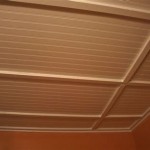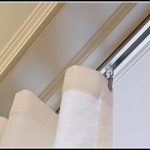Noise can be a major distraction in any home or office, and it can be especially challenging to block out sound coming from above. If you’re looking for a way to reduce unwanted noise and create a more comfortable living or working environment, consider the benefits of ceiling sound insulation. This article will discuss the basics of soundproofing a ceiling and the different materials you can use to help reduce unwanted noise.
What is Ceiling Sound Insulation?
Ceiling sound insulation is an effective way to reduce the amount of noise that enters or leaves a space. Insulation helps to absorb sound, rather than reflect it. By adding insulation to the ceiling, you can significantly reduce the amount of sound that enters or leaves the room. In addition to reducing noise, insulation can also help to regulate temperature, providing another layer of comfort and convenience.
Types of Ceiling Sound Insulation
When it comes to ceiling sound insulation, there are a variety of materials available. The most common type of insulation is fiberglass batting, which is typically made of fiberglass fibers held together with a resin. This type of insulation is usually installed between the ceiling joists and is available in different R-values, which indicate its level of effectiveness in reducing sound. Other types of insulation include mineral wool, foam boards, and acoustic tiles. Each type has its own pros and cons, so be sure to do your research before deciding which one is right for your project.
Benefits of Ceiling Sound Insulation
Adding insulation to your ceiling can provide a number of benefits, including:
- Reduced noise from other rooms and from outdoors
- Improved sound quality in the room
- More comfortable environment
- Reduced energy costs
- Reduced risk of fire and mold
- Increased safety
Getting Started with Ceiling Sound Insulation
If you’re ready to start soundproofing your ceiling, the first step is to determine the type of insulation that is best for your project. You should also consider the cost of the materials and the labor needed for installation. Once you’ve decided on the type of insulation, you can begin the installation process. Depending on the type of insulation you’ve chosen, this may involve cutting and fitting the material, stapling it to the ceiling joists, and sealing any gaps. If you’re not confident in your DIY abilities, it’s best to hire a professional to install the insulation for you.
Conclusion
Ceiling sound insulation can be a great way to reduce unwanted noise and create a more comfortable living environment. There are a variety of materials available, so be sure to do your research before making a purchase. If you’re not confident in your DIY abilities, it’s best to hire a professional to install the insulation for you. With the right materials and a bit of effort, you can create a quieter and more comfortable space.















Related Posts








